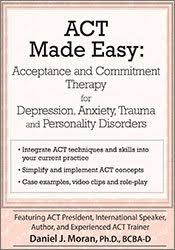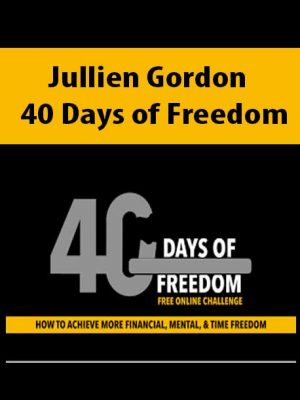ACT Made Easy: Acceptance and Commitment Therapy for Depression, Anxiety, Trauma and Personality Disorders – Daniel J Moran
$200.00 Original price was: $200.00.$56.00Current price is: $56.00.
Proof of item:
- Integrate ACT techniques and skills into your current practice
- Simplify and implement ACT concepts
- Case examples, video clips and role-play
Integrating Acceptance and Commitment Therapy into your practice offers a new way for you to achieve positive therapeutic outcomes with difficult-to-treat clients.
Join experienced ACT presenter Daniel J. Moran, Ph.D., BCBA-D, as he delivers an exercise and technique-heavy course that will give you the tools needed to more effectively treat clients with depression, anxiety, trauma, and the personality disorders.
Dr. Moran will teach you the main concepts of ACT, including mindfulness, acceptance, and defusion–demonstrating how these create greater psychological flexibility. Discover a variety of techniques for helping clients who are struggling to make difficult behavior changes due to the presence of painful thoughts, feelings and memories. You will learn how to effectively use metaphors, custom techniques and experiential exercises to help your clients identify their values and translate them into behavior goals.
Through case examples, video clips, and role-play you will be able to integrate ACT techniques and skills in your practice tomorrow!
- Define ACT concepts such as experiential avoidance and cognitive defusion.
- Illustrate the role of psychological flexibility in ACT and list techniques for increasing it.
- Identify how to reduce experiential avoidance by implementing emotional and behavioral willingness techniques with clients.
- Demonstrate how ACT incorporates elements of exposure therapy to reduce experiential avoidance.
- Discover core ACT concepts through the use of role-playing, case examples and clinical videos.
- Integrate ACT techniques into treatment for specific disorders including depression, anxiety, trauma and the personality disorders.
Get ACT Made Easy: Acceptance and Commitment Therapy for Depression, Anxiety, Trauma and Personality Disorders of author Daniel J Moran
ACT in a Nutshell
- The role of values: mindfulness, acceptance, commitment, behavior
- Experiential avoidance
- Existential behaviorism
- Psychological flexibility
- ACT for anxiety, depression, trauma and personality disorders
- Disorder-specific strategies
- Common treatment elements
- Metaphors, paradox and experiential exercises
Role of Exposure in ACT
- Translate client values into behavioral goals
- Barriers to behavioral goals: external and internal avoidance
- External Exposure
- Situations
- People
- Internal Exposure
- Thoughts
- Emotions
- Memories
- Bodily sensations
ACT in Action
- Anxiety
- Client avoidance strategies (including rumination)
- Clean vs. dirty anxiety
- Attack reason giving
- Anxiety detector exercise
- Turn up the willingness knob
- Mountain of food metaphor
- Passengers on the bus metaphor
- And vs. but
- Trauma
- Function of trauma symptoms
- Specify treatment goals
- Target self-harm behaviors
- Increase psychological safety
- Tin can monster exercise
- Mindfulness exercises
- Depression
- Role of avoidance in depression
- Target suicidality
- Evaluation vs. description exercise
- Buy thoughts and defuse language
- Observing self-exercise
- Personality Disorders
- Increase emotional tolerance
- Values clarification
- Mind vs. experience
- Man in the Hole analogy
- Target the client’s story
- Work with client anger
- Role of therapist self-disclosure
- Chessboard metaphor
Get ACT Made Easy: Acceptance and Commitment Therapy for Depression, Anxiety, Trauma and Personality Disorders of author Daniel J Moran
Q & A
Related products
Personal Development
Personal Development
Personal Development
Personal Development
Personal Development
Personal Development
Personal Development
Personal Development














Reviews
There are no reviews yet